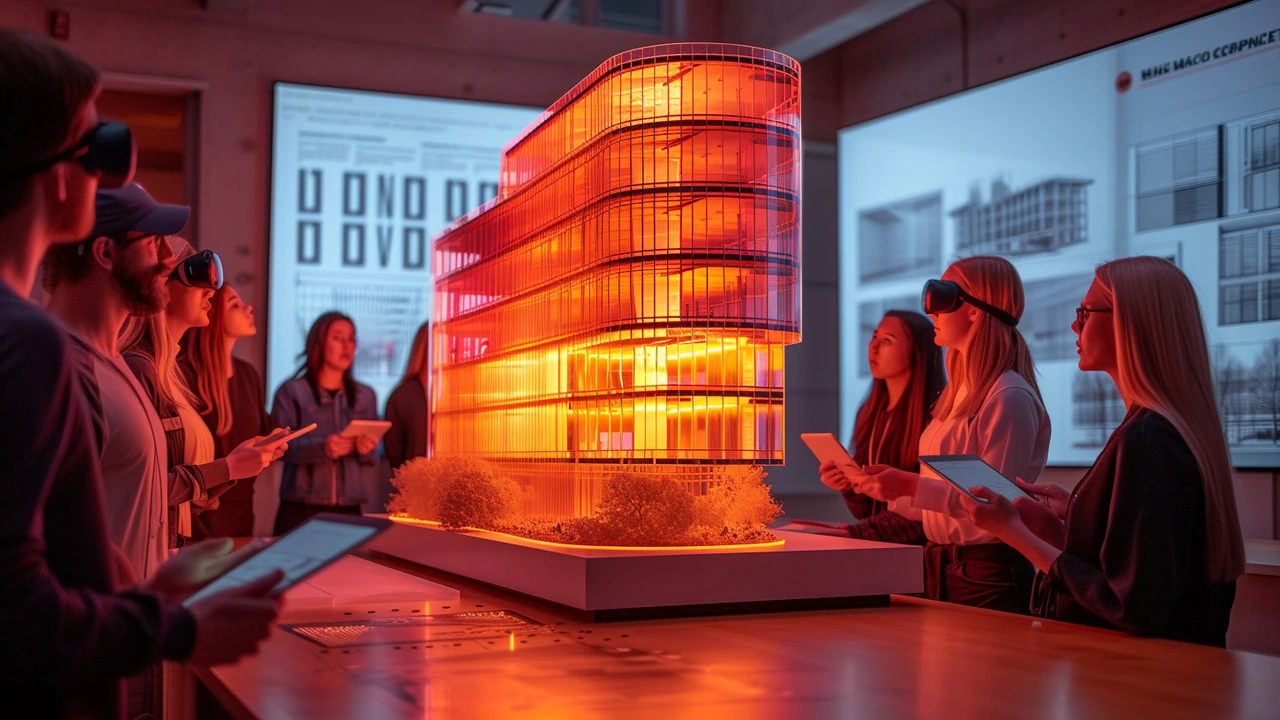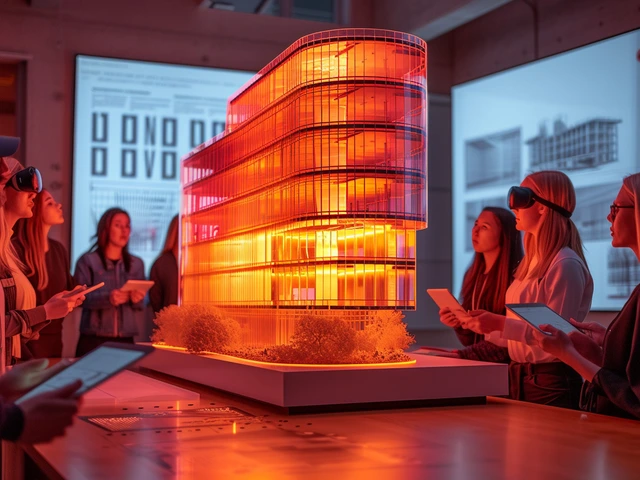Peering into the Future: The Advent of High-Tech Architecture
From the very first houses made from mud and straw to the steel-silhouetted skyscrapers of the 20th century, architectural designs have always mirrored the society of their time. As our society becomes increasingly driven by technology, it follows, then, that architectural designs are moving unquestionably in high-tech directions. Yes, it's not just your smartphones, watches, or cars that are getting smarter. Buildings, too, have started to adapt and evolve, taking an unconventional twist on traditional architecture.
The previously envisioned future is here, and it’s nothing short of fascinating! High-tech architecture, also described as Late Modernism or Structural Expressionism, is the architectural genre that emerged in the 1970s, incorporating elements of high-tech industry and technology into the design. This form of architecture found its way into Australia as well, and as a resident of Perth, I've bore witness to its breathtaking evolution. Let’s delve into the mesmerizing world of high-tech architecture.
Inception of Innovation: Understanding High-tech Architecture
In essence, high-tech architecture encourages designers and engineers to celebrate rather than conceal the bones and guts of a building. It borrows elements from modernism, intermingles them with intrinsic aspects of industrial design, and thus, evolves into an architectural design that not only complements our tech-enhanced lives but also enriches it.
The beauty of high-tech architecture lies in its realism. Rather than dressing buildings up to resemble something they are not, this style of architecture promotes a truthful representation of structures and their functions. In high-tech buildings, functional elements such as stairwells, elevators, and HVAC systems are not just exposed but celebrated, in a sense, as part of the design aesthetic. But, it’s not just about the bones and guts, high-tech architecture also intricately incorporates flexibility, adaptability, and a dedication to sustainability.
Titanium Titans: Exploring Popular High-tech Buildings
The world over, many majestic structures stand as testaments to the enduring allure of high-tech architecture. One of the earliest and most pronounced examples is the Centre Georges Pompidou in Paris, a cultural complex that evokes adoration (and shock) for its radical, inside-out aesthetic. In the Land Down Under, the Sydney Opera House stands as another beautiful representative of this style. This internationally recognized symbol of Australia, with its complex web of 'shells', created an architectural composition that appears organic and ever-changing.
Another jewel in the crown of high-tech architecture is the Guggenheim museum in Bilbao, Spain. Clad in gleaming titanium, the museum is a complex interlinking of orthogonally folded sheets, soft curves, and sharp corners. The structure reflects both the industrial past of the city and the modern twists it is taking now. When I visited it a few years ago as part of my architectural exploration, I was marveled at the juxtaposition of art and technology—showing how impactful high-tech architecture can be.
Blending Tech and Aesthetics: Advanced Elements in High-tech Architecture
In terms of visual appeal, high-tech architecture may look distinctly different from traditional architecture, but that’s not where the differences end. The inclusion of advanced technology and materials is central to high-tech buildings. State-of-the-art materials like titanium, computer-animated shaping of building components, and the use of smart systems like sensor-driven automation, renewable energy integration, and digital interfaces all contribute to this new-age architectural style.
What excites me more about high-tech architecture is its adaptability. While in traditional architecture, the form was largely fixed, high-tech architecture allows buildings to change and evolve over time - to bend and flex with changing needs and technologies. Some high-tech buildings have walls and floors that can be reconfigured easily, while others utilize smart glass that can alter its transparency based on sunlight. This not only ensures aesthetic pleasure but also contributes towards energy efficiency.
Embracing the Future: High-tech Architecture and Sustainability
As we're becoming more cognizant of the impact of buildings on the environment, the importance of sustainability in architecture is growing. Luckily, high-tech architecture is intrinsically linked to sustainable design. In high-tech buildings, energy efficiency, resource conservation, and a reduced impact on the natural environment are paramount.
Heating, ventilation, and air conditioning (HVAC) systems are being designed to be more energy efficient, utilizing automated control systems and energy regeneration technologies. Building materials are being chosen for their low environmental impact and ability to be produced sustainably. Some architects are even incorporating green roof systems, rainwater collection systems, and onsite renewable energy generation into their designs. And it's not just about what goes into these buildings - the potential for recycling and reuse of building materials post-destruction is also considered.
Your humble writer, for instance, is considering installing a green roof on his Perth pad. While the idea may be overwhelming - considering how tech-savvy one needs to be to understand fully or manage such a project - the benefits in terms of energy efficiency, aesthetic appeal, and sustainability are too enticing to ignore.
In conclusion, high-tech architecture compels us to redefine the relationships between form, function, technology, and aesthetics. As our grasp of technology continues to evolve, our buildings will follow suit in their drive to mirror the advancements of society. High-tech architecture represents the architectural style of the new age—and quite possibly the future. As the span of technology continues to leave us in awe, don’t be surprised if in a few short years, your own home starts to feel just a bit smarter.




Leave a Comments